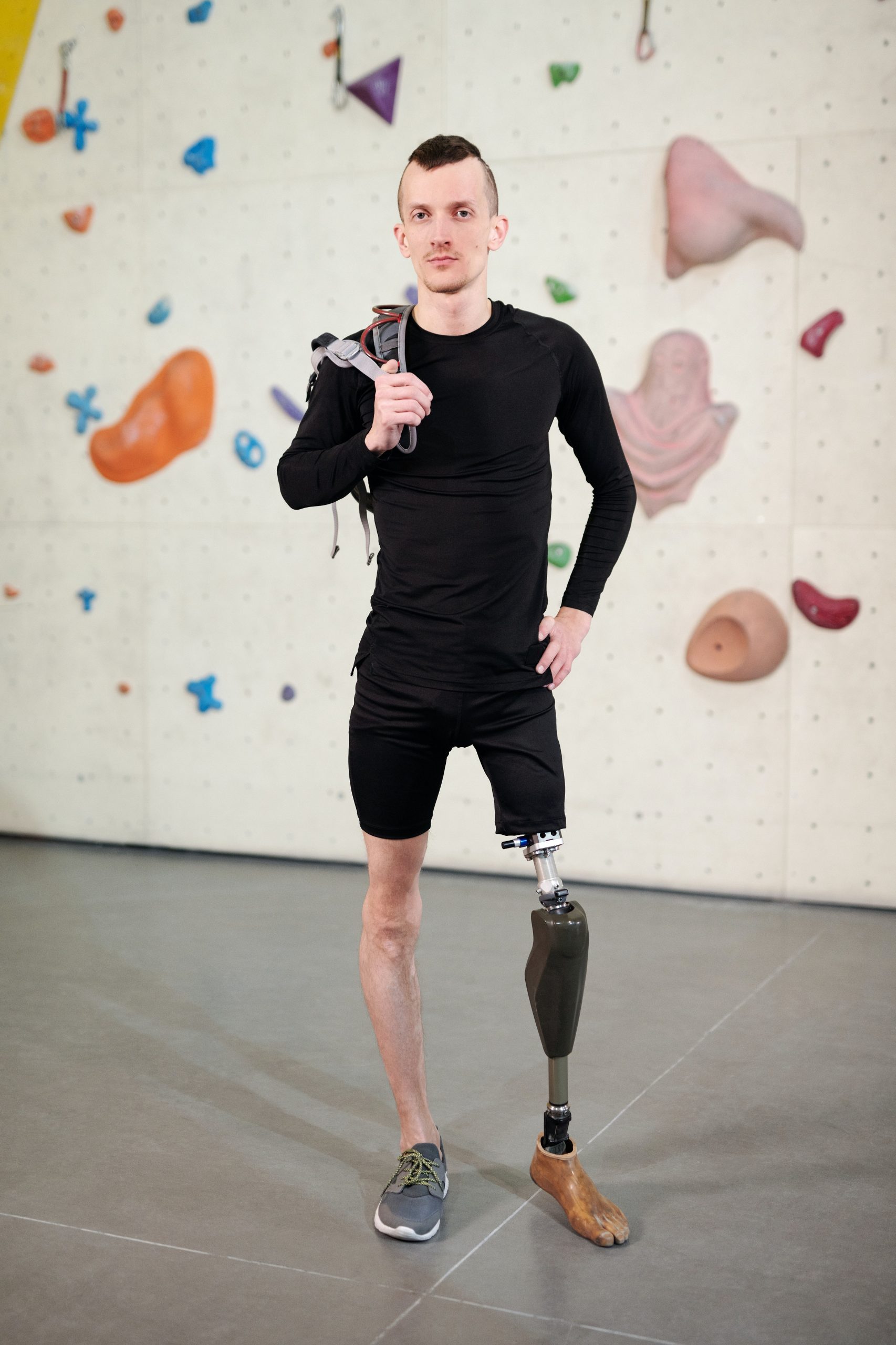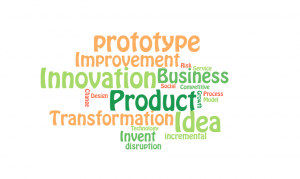What Kind of Business Activity to Do in Order to Continue Innovating
Chapter 1: Business Innovation Foundations
After reading this chapter, you should be able to do the following:
- Define business innovation.
- Explain why businesses innovate.
- Describe four (4) types of innovation.
- List characteristics of innovative products and services.
- Explain how the Systematic Inventive Thinking (SIT) methodology can be applied to help people think more creatively.
What is Business Innovation?
A century ago, Thomas Edison thought deeply about what drives invention or, as we call it today, innovation. One of his famous sayings, "Genius is 1 percent inspiration and 99 percent perspiration," stresses that innovation involves more than just great ideas. Edison knew from his own experience that the systematic hard work of trial-and-error experimentation paid off. His inventions, like the lightbulb and the phonograph, emerged through thousands of attempts as he refined the process step by step.[1]
There are many definitions for innovation and even the innovation experts in today's business world cannot agree on the definition of innovation. Below are definitions from 15 innovation experts.[2]
Which do you think best defines the term "innovation"? Why?
- Turning an idea into a solution that adds value from a customer's perspective. (Nick Skillicorn)
- The application of IDEAS that are novel and useful. (David Burkus)
- Staying relevant. (Stephen Shapiro)
- A great idea, executed brilliantly, and communicated in a way that is both intuitive and fully celebrates the magic of the initial concept. (Pete Foley)
- A feasible relevant offering such as a product, service, process, or experience with a viable business model that is perceived as new and is adopted by customers. (Gijs Van Wulfen)
- Introduction of new products and services that add value to the organization. (Kevin McFarthing)
- Any variation goes, as long as it includes "new" and it addresses customer needs and wants. (Robert Brands)
- The fundamental way the company brings constant value to their customer's business or life, and consequently their shareholders and stakeholders. (Paul Hobcraft)
- Work that delivers new goodness to new customers in new markets, and does it in a way that radically improves the profitability equation. (Mike Shipulski)
- Creativity is thinking of something new. Innovation is the implementation of something new. (Paul Sloane)
- The implementation of creative ideas in order to generate value, usually through increased revenues, reduced costs, or both. (Jeffrey Baumgartner)
- I try not to define "innovation" as we should tone down our use of the work and term. (Stefan Lindegaard)
- Anything that is new, useful, and surprising. (Drew Boyd)
- New organic value creation by applying creativity, in-depth relationships with consumers and customers, and new thinking. (Michael Graber)
- The future delivered. (Jorge Barba)
We might give business innovation a more encompassing definition. is "Executing an idea that addresses a specific challenge or opportunity and achieves value for both the company and its stakeholders." Of course, stakeholders include customers, government, partners, suppliers, shareholders/owners, lenders, society, employees (and their families), and the community.

When we think of innovation in the great big world, including the innovations of organizations, we might define in more broad terms, such as, "Creating something new that serves people's needs or wants."
Why Do We Innovate?
Innovative ideas are envisioned by individuals, businesses, and governments because of the following reasons.
- Remain competitive and relevant and avoid obsoletion
- Keep up with customer demands, preferences, and trends
- Adapt to take advantage of changes in modern technology
- Reduce expenses
- Increase revenues
- Improve efficiency and/or effectiveness
- Improve company and/or brand image
- Expand market share
- Improve the quality of life
- Improve the standard of living
- Attract investors, employees, and partners
- Solve a problem
- Take advantage of an opportunity
As commonly said in business, innovation is the only Imperative. In a world where everything changes rapidly, the field of business has been left no other option but to keep pace. Whether the innovation is about making a product more user-friendly or creating a more efficient finance model, Innovation is bound to happen.
What is the calculus of innovation? The calculus of innovation is quite simple: Knowledge drives Innovation, Innovation drives Productivity; Productivity drives Economic Growth. – William Brody [3]
Where Do Good Ideas Come From?
Innovation is the process of taking an idea and putting it into practice. Creativity, on the other hand, is what you do in your head to generate the idea. An innovative idea must be new, original, or improved, and must create value.
Once a business has a creative idea it must determine if the idea is feasible to implement. Can it be done? Is it affordable? Are resources available or obtainable? Will it meet the needs of the target audience? Before spending time and money researching and developing a new product or changing a business model, feasibility and risk must be assessed.
Watch the YouTube video below, "Where Good Ideas Come From" to learn about where you can find or how you can develop good ideas. [4] Transcript for "Where Good Ideas Come From" Video [PDF–New Tab]. Closed captioning is available on YouTube.
Why is Innovation Important?
Today, we need innovators more than at any time before. Every organization and business is feeling the impact of globalization, migration, technological and knowledge revolutions, and climate change issues. Innovation will bring added value and widen the employment base. Innovation is imperative if the quality of life in these trying circumstances is to improve. Innovation will make the world a better place for the younger generation.[5]
What are the Types of Innovation?
We often see innovations in products and services being offered to customers, but there are many other types as well. Innovation can be classified based on the degree of innovation as well as the object of innovation.
Degree of Innovation
is the concept of growing or improving a company by making a succession of small-scale improvements to existing products, services, processes, and tools. Incremental innovation focuses on improving existing offerings to align with current consumer trends and is considered a relatively low-risk approach. This approach is the most common type of innovation and has helped many companies remain competitive for decades.
A few examples:
- Volkswagen (VW) releases a new Golf model every five years or so.
- Gillette uses incremental innovation each time it brings out the next generation of its razors.
- Microsoft innovates incrementally with each new Windows release (Win 3.1, Win XP, Win 7, Win 8, Windows 10).
is the launch of a new business model, concept, product, or service that creates a new market segment and value drivers. Often, disruption comes from a new company, which eventually displaces established market leaders and products. This approach focuses on meeting consumer demands in ways that no other product or service has done before. Disruptive innovation often creates entirely new markets or a fundamental shift in how the consumers interact with the current market after the disruptive product is introduced.
- There are quite a few examples of disruptive innovation, one of the more prominent being Apple's iPhone disruption of the mobile phone market. Prior to the iPhone, most popular phones relied on buttons, keypads, or scroll wheels for user input.
- Apple's iTunes and Spotify are streaming music platforms that made previous music formats obsolete. Do you know what a vinyl record is? How often do you see a physical music store? They used to exist. As each new technology became available it disrupted the music industry and made past formats obsolete. For example, we used to listen to music on vinyl records, then 8-track tapes and cassette tapes, then compact discs (CDs), then MP3 digital music (iPod craze), and more recently with iTunes and Spotify. Streaming music seems to be where it's at, for now!
- Netflix's business model is subscription-based. It is a streaming platform, which offers on-demand video. The evolution of movie formats–8mm film to videocassettes (VHS, Beta) to CD, DVDs, and Blu-rays took home entertainment to the next level, then Netflix brought us movie steaming. Movie streaming has revolutionized the home entertainment experience. When Netflix began streaming movies, video rental companies such as BlockBuster went out of business and cinemas also saw reduced revenues. While Blockbuster clung to its business model of being a video rental company, Netflix constantly disrupted itself. Netflix went from a business model of being a DVD subscription rental service to streaming movies and TV series to being a creator of content.
Object of Innovation
Products and services are the most common objects to innovate, but there are many types of innovation and they are categorized in many ways.
Business Model
is probably the most challenging of the innovation types as it will likely present an organization with major requirements for change. Often, the very capabilities or processes that have been optimized to make a company successful and profitable will become the targets for transformation. In some cases, these changes can threaten elements of the company's identity and come into conflict with brand expectations or promises.[6]
Whereas both product and process innovation can be incremental and moderate, business model innovation is almost always radical, risky, and transformative. When talking about business model innovation, without a doubt, names like AirBnB, Uber, or Spotify will come up. These are perfect examples of fast-moving companies that were able to disrupt age-old markets (hotel, taxi, music) by tweaking or inverting their industry's traditional business model.[7]
Social innovation
refers to a response to a social or environmental problem, which, once adopted, results in better solutions than existing approaches. Social innovations have a transformative impact and improve organizations, communities, regions, or systems.
Social innovation can include:
- new, more effective social programs
- the use of new technologies
- the growth of social enterprises
Social enterprises are businesses that pursue a social or environmental mission.[8]
In Canada, activity at the governmental level includes the government's launching of a Social Innovation and Social Finance Strategy to provide better support to community organizations working to tackle social challenges. The strategy includes a Co-Creation Steering Group made up of 16 leaders, practitioners, and experts from multiple fields, including the community, philanthropic, financial, and research sectors, and complemented with public consultation.[9]
Product innovation

When people think of innovation, often, they're thinking of product innovation. can come in three different forms. 1) The development of a new product, such as the Fitbit or Amazon's Kindle. 2) An improvement of the performance of the existing product, such as an increase in the digital camera resolution of the iPhone 11. 3) A new feature to an existing product, such as power windows to a car.[10]
Drivers of product innovation might be technological advancements, changes in customer requirements and demands, or outdated product design. Product innovation is generally visible to the customer and should result in a greater demand for a product.[11]
Service innovation
With the growing economic importance of the services sector, service innovation is playing an ever more significant role in driving growth in today's knowledge-intensive economy. ensure and enhance the utility, performance, and apparent value of an offering. Some offerings are purely service, such as getting a haircut, hiring someone to paint your house, or taking an Uber to your friend's place. These are services you may utilize throughout your lifetime. Other service innovations may be combined with product offerings, such as purchasing groceries (products) and having them delivered to your home (service), or buying a new television (product), and purchasing the warranty (service).
Service innovations may make a product easier to enjoy, reduce the risk associated with buying a product or may make a product more compelling to buy. Service innovations may simply make your life more enjoyable. Who doesn't enjoy a visit to the spa? According to SuperOffice, 86% of buyers will pay more for a great customer experience.[12]
Consider a business that you have been buying from for several years and answer the following questions.
- Which services have you noticed they offer today that they may not have offered in previous years? When you went for a hair cut were there any new service offerings at the salon? When you ordered online were there any new services? New service innovations may add some small service that enhances the customer experience or be fully new and something you have not seen in the past. During COVID many companies added new services in order to abide by isolation guidelines. For example, many businesses offered customers an opportunity to order online and have their products shipped to their homes, or customers could drive to the store, park, and have their order delivered to their vehicle in the parking lot.
- What service offerings do you enjoy most? Playing a game of paintball? Going to the Cinema? Taking dance lessons? Dining at a restaurant? Whatever it is, consider whether it is a service offering or a combination of service and product offering?
- What products have you been talking about with your friends lately–new shoes, new cell phones, or new restaurants? Many new products are simply incremental innovations but many customers are eagerly awaiting the next release of the iPhone or an Xbox or Wii game. What are you eagerly waiting for?
Process innovation
Process is the combination of facilities, skills, and technologies used to produce, deliver, and support a product or provide a service. Within these broad categories, there are countless ways process can improve. While product innovation is often visible to customers, a change in process is typically only seen and valued internally. Generally, changes in process reduce costs of production more often than they drive an increase in revenue. Of the three types of innovation, process is typically the lowest-risk.[13]

can include changes in the equipment and technology used in manufacturing (including the software used in product design and development), improvement in the tools, techniques, and software solutions used to help in supply chain and delivery system, changes in the tools used to sell and maintain goods, as well as methods used for accounting and customer service.[14]
One of the most famous and groundbreaking examples of process innovation is Henry Ford's invention of the world's first moving assembly line. This process change not only simplified vehicle assembly but shortened the time necessary to produce a single vehicle from 12 hours to 90 minutes.[15]
Technological Innovation
focuses specifically on technology and how to embody it successfully in many types of innovations such as products, services, processes, profit models, channels, and customer service engagement innovations. Regardless of the industry or products, technology is likely to be a pillar for businesses because many innovations stem from advances in technology. By embracing AI, machine learning, data science, and automation, businesses can innovate in each of these areas to improve internal processes and external communications. Ultimately, these advances will positively impact productivity, sales, marketing, and customer service.[16]
Consider the following examples.
- Do you own an Internet of Things (IoT) device? These devices connect to the Internet. Have you heard of the refrigerator that automatically keeps track of what is put in and what is taken out? Samsung has a refrigerator with a feature called SmartThings Video. This feature lets people watch security cameras from the fridge.[17]
- Many people are talking about artificial intelligence these days. And yes, in many cases, the topic is covered with exaggerations and hype. Fortunately, the overall AI progress and the pace of the underlying technological innovation easily justify this hype. Consider the progress achieved in fields like Deep Learning and areas such as Computer Vision and Natural Language Processing.[18]
- Virtual reality (VR) technology is exploding. So are the opportunities for innovative experiences, use-cases, and products. Content creation for VR is a great opportunity with significant startup activity worldwide. VR startups are working across multiple domains and business scenarios, including E-commerce, gaming, social applications, learning and education, healthcare, online VR environments, and more. The next few years will bring impressive progress on all VR hardware, applications, and VR content.[19]
- Blockchain is one of the most disruptive technologies out there. Its distributed, decentralized, and immutable properties make it the ideal way to store and track data across numerous domains. In the years to come, we shall see new applications and novel scenarios beyond crypto-currencies and fin-tech. Startups are already working on novel concepts that make sense to leverage blockchain. Some of these will disrupt the social, government, and even political aspects of our world.[20]
Doblin's Ten Types of Innovation
The Ten Types of Innovation Framework® is a great way to categorize innovation types. For many years, executives equated innovation with the development of new products. But creating new products is only one way to innovate, and on its own, it provides the lowest return on investment and the least competitive advantage. The Ten Types of Innovation® framework provides a way to identify new opportunities beyond products and develop viable innovations.[21]

What is Systematic Inventive Thinking (SIT)?
(SIT) is a thinking methodology where creativity takes center stage. It contains five thinking patterns that humans have used for thousands of years. It directly contradicts the principle of 'thinking outside the box' and uses 'thinking inside the box' as a guiding principle.[22]
Most innovators and creative people use patterns and structured thinking to innovate. Agatha Christie, for example, wrote over 60 novels and has sold more books than anyone. She did it by using a familiar template in each of her books. That template helped structure her thinking in a way that made her more creative.[23] This is the essence of a method called Systematic Inventive Thinking (SIT). With SIT, innovation follows a set of patterns that can be reapplied to any product, service, or process.
Cognitive Fixedness
SIT helps you overcome cognitive fixedness. is a state of mind in which you think of an object or situation in one specific way, to the exclusion of any alternative. SIT promotes thinking of objects in various situations and uses.
Function Follow Form Principle
The is a way to overcome some of the drawbacks of traditional research-led or design-based innovation. Conventionally, product innovation begins with consumer need identification that's then translated into functions, therefore the form of the product is identified by the functions the product will be used for by consumers. Most consumers however struggle to articulate unmet needs and would have difficulty imagining a new product that never existed before. For example, people most probably would not have thought of needing a car when horses and buggies were being used for locomotion. There is a famous quote from Henry Ford, "If I had asked people what they wanted, they would have said faster horses."[24]
Five Thinking Patterns
SIT applies a backward approach to innovation. Rather than starting with needs in the market, SIT would have you start by applying the five thinking patterns to existing products and services in order to ideate new products and services. After some ideas were generated you would evaluate whether or not these new innovative ideas will fill a need or want of consumers. If they will then you determine if developing these new ideas is feasible for the company (e.g., resources) and if the company can mitigate the risks involved.
Surprisingly, the majority of innovative products and services can be explained by just five patterns as listed in table 1.1 below.[25] Check out Drew Boyd's Pinterest page for multiple examples of each pattern.
| Subtraction | Remove an essential component from a product and find a new arrangement of the existing components. |  |
|---|---|---|
| Task Unification | Assign a component of a product an additional job, one that it wasn't designed to do. |  |
| Multiplication | Take a component and copy it but change the component in some counterintuitive way. |  |
| Division | Take a component or the product itself and divide it along some physical or functional line and then rearrange it back into the product. |  |
| Attribute Dependency | The product has a correlation between two attributes of the product and its environment. |  |
Creative Constraint
SIT uses thinking inside the box as a guiding principle, which means using constraints to help you be more creative in solving problems. can foster innovation when they represent a motivating challenge and focus efforts on a more narrowly defined path. Having some constraints may incite big thinking, while having too many constraints may limit outcomes. Constraints may include limited time, money, or requiring results to include very specific needs.
Watch "The Power of Creative Constraints" YouTube Video below to learn more about creative constraints.[26] Transcript for "The Power of Creative Constraints" Video [PDF–New Tab]. Closed captioning is available on YouTube.
- Business Innovation is "Executing an idea that addresses a specific challenge or opportunity and achieves value for both the company and its stakeholders." Of course, stakeholders include customers, government, partners, suppliers, shareholders/owners, lenders, society, employees (and their families), and the community.
- When we think of innovation in the great big world, including the innovations of organizations, we might define Innovation in more broad terms, such as, "Creating something new that serves people's needs or wants."
- Today, we need innovators more than at any time before. Every organization and business is feeling the impact of globalization, migration, technological and knowledge revolutions, and climate change issues. Innovation will bring added value and widen the employment base. Innovation is imperative if the quality of life in these trying circumstances is to improve. Innovation will make the world a better place for the younger generation.
- Incremental Innovation is the concept of growing or improving a company by making a succession of small-scale improvements to existing products, services, processes, and tools. Incremental innovation focuses on improving existing offerings to align with current consumer trends and is considered a relatively low-risk approach. This approach is the most common type of innovation and has helped many companies remain competitive for decades.
- Disruptive Innovation is the launch of a new business model, concept, product, or service that creates a new market segment and value drivers. Often, disruption comes from a new company, which eventually displaces established market leaders and products.
- Social Innovation refers to a response to a social or environmental problem, which, once adopted, results in better solutions than existing approaches. Social innovations have a transformative impact and improve organizations, communities, regions, or systems.
- Product Innovation can come in three different forms. 1) The development of a new product, such as the Fitbit or Amazon's Kindle. 2) An improvement of the performance of the existing product, such as an increase in the digital camera resolution of the iPhone 11. 3) A new feature to an existing product, such as power windows to a car.
- Service Innovations ensure and enhance the utility, performance, and apparent value of an offering. Some offerings are purely service, such as getting a haircut, hiring someone to paint your house, or taking an Uber to your friend's place. These are services you may utilize throughout your lifetime. Other service innovations may be combined with product offerings, such as purchasing groceries (products) and having them delivered to your home (service), or buying a new television (product), and purchasing the warranty (service).
- Process Innovation can include changes in the equipment and technology used in manufacturing (including the software used in product design and development), improvement in the tools, techniques, and software solutions used to help in supply chain and delivery system, changes in the tools used to sell and maintain goods, as well as methods used for accounting and customer service.
- Business Model Innovation is probably the most challenging of the innovation types as it will likely present an organization with major requirements for change.
- Technological Innovation focuses specifically on technology and how to embody it successfully in many types of innovations such as products, services, processes, profit models, channels, and customer service engagement innovations.
- The Ten Types of Innovation Framework® is a great way to categorize innovation types.
- Systematic Inventive Thinking (SIT) is a thinking methodology where creativity takes center stage. It contains five thinking patterns that humans have used for thousands of years.
- Cognitive Fixedness is a state of mind in which you think of an object or situation in one specific way, to the exclusion of any alternative.
- Function Follows Form Principle is a way to overcome some of the drawbacks of traditional research-led or design-based innovation.
- Constraints can foster innovation when they represent a motivating challenge and focus efforts on a more narrowly defined path. Having some constraints may incite big thinking, while having too many constraints may limit outcomes. Constraints may include limited time, money, or requiring results to include very specific needs.
- New Innovation Development. Research one of these companies – Walmart, Lego, Coca Cola, Ikea, Google – and find out what they are working on in the way of innovation then share your findings with the class and professor.
- Innovation Lab. Enterprise companies across all industries, including Walmart, H&M, and Starbucks have opened innovation labs to help them fast-track new products, understand market trends, and develop solutions for customers. Find a company that has an Innovation Lab, research what it is all about and how it is used. Share your findings with the class and your professor.
- Technology Innovation. Find a new Technology Innovation other than those mentioned within the chapter. Research it. How will this technological innovation be used? Who will it help? What value does it bring? Provide an example of where it is used now (if it is already in production or prototype). Share your findings with your class and professor.
- Cognitive Fixedness. Practice overcoming cognitive fixedness (thinking a product can only be used in a very specific way). Pick up a coffee mug. What would most people say it is used for? Apply SIT by applying each of the five patterns to this coffee mug. What did you invent by applying each pattern? Who would use your new innovations? What value would they bring? Compare your innovative ideas with a partner (another student). Did you derive similar results or were they very different? Discuss with your class and professor. This exercise can be done with just about any item you wish to start with.
- Cognitive Fixedness. Try it again, practice overcoming cognitive fixedness (thinking a product can only be used in a very specific way), but this time grab a plastic shopping bag. Many of these bags are thrown into the garbage after one use. Apply SIT by applying each of the five patterns to this plastic bag. What did you invent by applying each pattern? Who would use your new innovations? What value would they bring? Compare your innovative ideas with a partner (another student). Did you derive similar results or were they very different? Discuss with your class and professor. This exercise can be done with just about any item you wish to start with.
- Non-polluting car. Wouldn't it be great to have flying cars that ran on sunshine? Let's try an exercise in innovative thinking within the box (applying constraints). Discuss with a partner (another student) how you might create a car that would not pollute the environment, that would not make noise (or very little), that would not be too expensive for consumers, and that would be a car disabled people (e.g., sight impaired, physical impairment, hearing impaired – you may wish to work with one constraint at a time then try combining them) could drive. Apply SIT by applying each of the five patterns to this innovative problem. What ideas did you come up with? Are they feasible? Can they be developed in today's world or will they have to wait until some technological advancement is made in society? Discuss with your class and professor.
To complete this exercise you may need to do a little research on Dolbin's Ten Types of Innovation first. Have fun testing your memory by matching image cards with text cards to pair each type of innovation.
Note: Cards have audio (please adjust audio settings on your device as desired).
References
(Note: This list of sources used is NOT in APA citation style instead the auto-footnote and media citation features of Pressbooks were utilized to cite references throughout the chapter and generate a list at the end of the chapter.)
Source: https://ecampusontario.pressbooks.pub/leadinginnovation/chapter/chapter-1-innovation-foundations/
0 Response to "What Kind of Business Activity to Do in Order to Continue Innovating"
Post a Comment